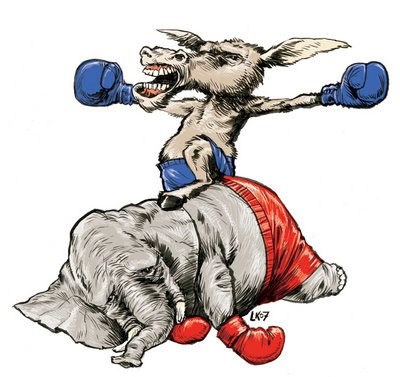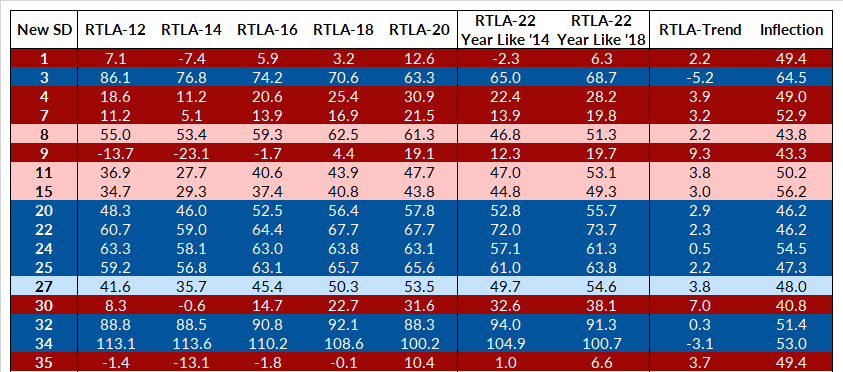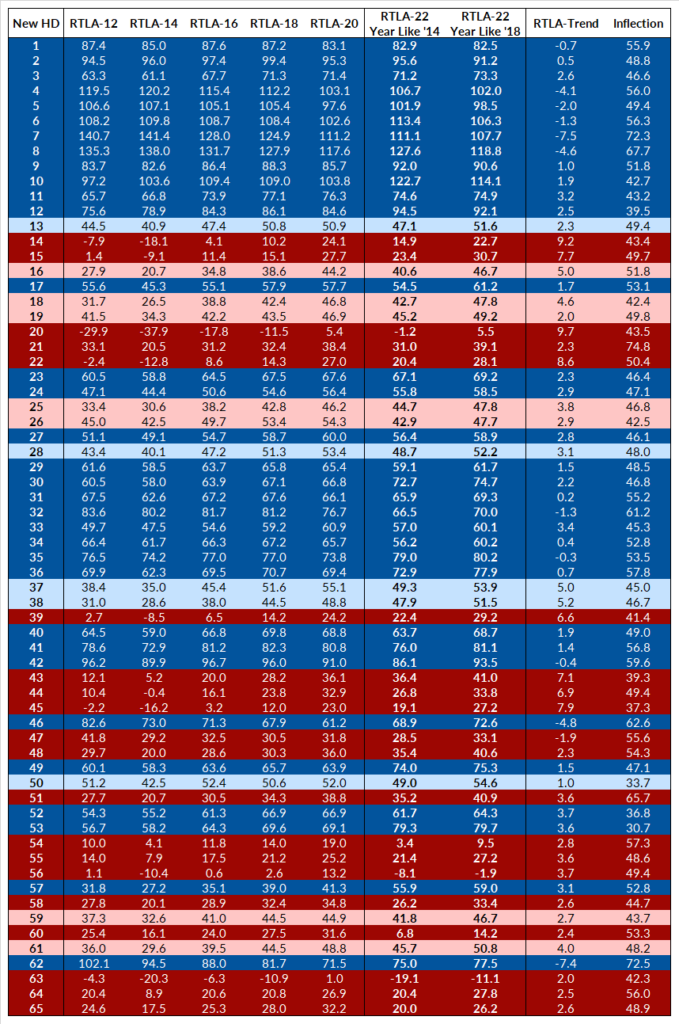 Colorado’s 2022 Competitive Outlook
Colorado’s 2022 Competitive Outlook
Updated 2022-04-18
This update adds more color to each district’s RTLA score by replacing the point estimate with a range based on two scenarios — a year like 2014 or a year like 2018.
Devotees will recall that a very strong turnout year for one party or the other can account for a five-point swing in the RTLA measure of competitiveness. Now, rather than making folks do that math in their head, these tables show the potential range for how well a Republican candidate will have to do among Unaffiliated voters this year.
The Secretary of State’s office recently released the first round of official registration numbers for our newly drawn Congressional and Legislative districts. Having previously explored the competitiveness of these new districts for the long-term, it’s now time to examine them more closely and assess the competitive landscape for 2022.
Congress 2022 Result: 3 Republicans, 5 Democrats
State Senate 2022 Result: 6 Republicans, 11 Democrats
State House 2022 Result: 24 Republicans, 41 Democrats
Congressional, State Senate, State House competitiveness maps.
Congress
2022 Result: 3 Republicans, 5 Democrats
The release of the official registration numbers had very little impact on my initial post-redistricting outlook. This cycle Republicans should hold three Congressional seats: CD-3, CD-4, CD-5.
The two districts that were meant to be competitive, CD-7 and CD-8, both heavily favor Democrats. As I pointed out initially, for a Republican to prevail in one of these districts would require a performance three points better than the best performance by our best-performing Congressman of all time — Mike Coffman.
State Senate
2022 Result: 6 Republicans, 11 Democrats
There are 17 State Senate seats up in 2022, and the most likely outcome is that Republicans take six of them while Democrats take 11. Even those Senate Districts that are considered to be leaning towards Republicans are only on the very cusp of competitiveness if we have a year like 2014. Any outcome worse than 2014 will likely tip Senate Districts 8, 11, and 15 into the Democrat column for this election.
State House
2022 Result: 24 Republicans, 41 Democrats
In the case of the State House, the release of the official registration numbers swung some districts away from my initial estimates. However, none of these changes were enough to change my original outlook on the new State House maps. Republicans are poised to extend their status as a dramatic minority in the House after the 2022 elections.
Understanding These Tables

For new readers, here is a short primer on how to understand these tables.
For those used to using the deeply, deeply flawed “R+” or “D+” method of measuring race competitiveness, you can read a more thorough explanation of the greatly superior RTLA index in my posts: The SD20 Fallacy and How Republicans Will Lose 2020 Reapportionment. (Guess I should update that second one to How Republicans LOST 2020 Reapportionment.)
RTLA can most easily be understood as the percentage of Unaffiliated and Other voters who need to vote for the Republican in order for the Republican to receive 51% of the vote. Thus, lower numbers are better for Republicans and higher numbers are better for Democrats. This figure changes as turnout and registration change, so the tables show where this figure stood for each election over the past decade to provide context for where the RTLA figure stood when different results occurred. The “Inflection” is the number at which a district is likely to swing from one party to another. If the current, RTLA ’22, figure is below the Inflection it indicates a likely Republican victory, if it’s above the Inflection it indicates a likely Democrat victory.
Let’s take CD-4 as an example. In Table 1 we can see that for a Republican to prevail in CD-4 (as currently configured) in 2012 would have required them to receive 10.7% of the Unaffiliated and Other votes — a pretty low bar. 2014 was a wave year for Republicans and the stronger turnout pushed this down to -0.1%. This means a Republican could have won CD-4 in 2014 with only Republican votes! We then see the RTLA climb steadily in the subsequent elections, 2016-2020, as growing Unaffiliated registration made that group of voters more relevant and the district more challenging for Republicans. Despite this erosion, we see that CD-4 is still safely Republican as is likely to be 21 to 28 points below the inflection point of 47.1%

